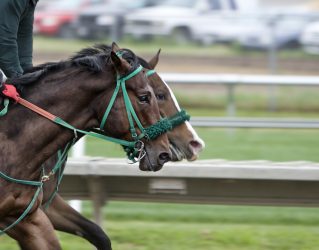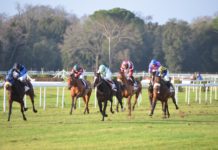 The British Horseracing Authority (BHA) has outlined the preparatory steps it will take as it works to ensure racing can resume from 1 June.
The British Horseracing Authority (BHA) has outlined the preparatory steps it will take as it works to ensure racing can resume from 1 June.This sets out a range of key targets it must meet, assuming the UK government’s provisional timeline for the return of live sport by that date can be achieved. The sector suspended all activity from 18 March, as a result of the novel coronavirus (Covid-19) pandemic.
“This preparatory work will ensure that we can safeguard our people’s health and wellbeing, and return to racing in a safe and appropriate manner,” it said.
By Friday 22 May, it will publish a fixture list and race programme covering the period from 9 to 30 June, having already set out the schedule for the first eight days from 1 June. However, 72-hour declarations, in which racing may be called off at the last minute, will be in place until further notice.
This will be followed by the publication of British Racing’s protocols for racing behind closed doors, setting out how the health of employees and participants will be safeguarded.
While much depends on these guidelines being released, the BHA has highlighted a number of actions that can be taken by the industry to prepare for the targeted launch date.
All stable employee records, for any individual likely to attend a racing fixture, and all horse vaccination records, must also be fully up to date. Furthermore, attendees will be required to go through a health screening process, likely to consist of a questionnaire to be completed weekly, followed by an on-course test that will be finalised in due course.
In addition, all industry participants must compete an online education module, covering social distancing, hygiene, racecourse protocols and the wearing of personal protective equipment (PPE). Any person that fails to complete the course will not be granted access to a racecourse.
Discussions are ongoing about exactly what PPE will be required for attendees, jockeys and stable staff.
All stakeholders are also advised to familiarise themselves with guidance from the UK, Scottish and Welsh governments.
Finally, a new system is being implemented to select horses to run at this year’s Royal Ascot festival. Due to take place from 16 to 20 June, the BHA has taken the “unprecedented” step of allowing trainers to identify specific horses they would like to see prioritised for contention at the festival.
The BHA explained that in a normal year, 700 two year-old horses would have performed by now. As a result of Covid-19, only around half of that number were likely to compete before the festival.
The number each trainer can put forward will be based on their previous record with two year-olds in Open Maiden or Novice races, and the number of runners they have had at the festival in the past three years. This, in theory, will see 126 nominations spread across 50 trainers, with a further 225 places available in the eight days following racing’s resumption.
Trainers that did not qualify to make selections through this formula will also be given one selection each. All selections must be made by 26 May, with the full list of submitted horses to be published a day later.











